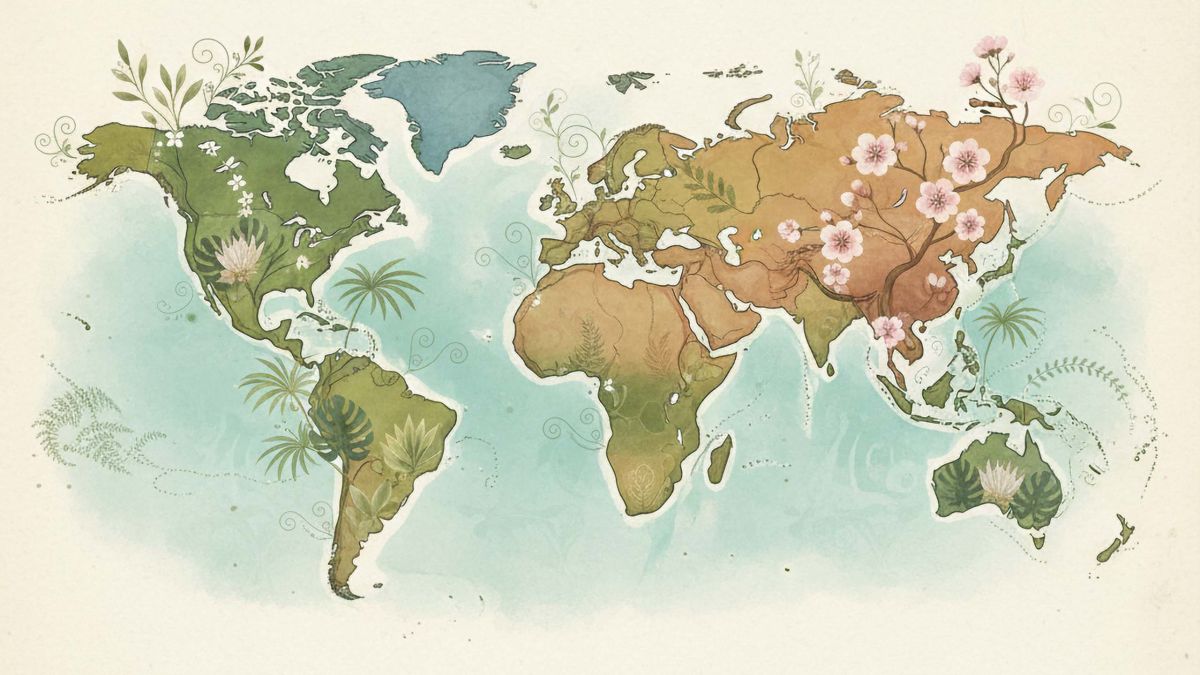Cultural Perspectives on Vaginal Care: Traditions, Practices, and Modern Shifts

Across continents, women have long tended to their intimate health with methods shaped by climate, resources, religion, and generational wisdom. While medical science increasingly standardizes conversations about gynecological wellbeing, traditional practices remain deeply influential, sometimes running in parallel with modern approaches.
Looking at how different cultures view vaginal care provides not only a window into varied customs but also an understanding of how women balance heritage and contemporary medicine.
Japan: Cleanliness Rooted in Ritual
In Japan, cultural emphasis on purity and hygiene is evident in intimate care. Bathing practices extend beyond relaxation to meticulous daily washing, often with unscented products designed to protect natural balance. Historically, women used herbal infusions in baths, such as mugwort, believed to aid circulation and recovery after childbirth. While contemporary Japan leans heavily on medical guidance and pharmaceutical solutions, the idea that vaginal health is inseparable from overall body care persists strongly.
India: Herbal Knowledge Passed Down
In India, Ayurvedic traditions remain influential in how many women approach intimate wellbeing. Herbal remedies, oils, and dietary guidelines emphasize balance and cleansing. Fenugreek seeds, neem, and turmeric are often mentioned in household remedies for maintaining vaginal health. Many practices tie into broader Ayurvedic philosophy, where digestion, body heat, and reproductive strength are interlinked. Urban centers show a shift toward modern gynecological products, but in rural areas, ancestral advice still holds sway, often blending with modern guidance.
Eastern Europe: Folk Remedies and Generational Memory
In parts of Eastern Europe, vaginal care has historically intertwined with folk medicine. Women once relied on herbal steams made from chamomile, calendula, or oak bark, thought to reduce irritation or aid postnatal healing. Oral traditions carried these remedies across generations, particularly in communities with limited access to formal medical care. Today, younger women in countries such as Poland or Romania increasingly turn to gynecologists for preventive care, though curiosity about traditional remedies remains part of cultural identity.
The Middle East: Care Within Modesty
In Middle Eastern societies, vaginal care is often framed by religious guidance and cultural modesty. Cleanliness, particularly linked with ritual ablutions, plays a significant role. Natural oils, such as olive oil, have historically been applied for comfort and moisture. In some regions, folk practices included the use of aromatic herbs, though these have largely faded in favor of medical treatments. The intersection of faith, privacy, and evolving healthcare access shapes how women today manage their wellbeing.
![]()
Latin America: Blending Tradition with Modernity
Across Latin America, vaginal care reflects both indigenous traditions and colonial influences. In Mexico and Central America, herbal steam baths known as temazcal were historically used for postpartum recovery, incorporating local plants like rosemary and eucalyptus. In the Andes, women often consumed herbs such as maca, considered beneficial for reproductive health. Modern Latin America reflects a mixture—urban areas embrace global pharmaceutical brands, while traditional remedies remain respected, especially during childbirth and recovery.
Sub-Saharan Africa: Rituals, Remedies, and Changing Awareness
In various African cultures, vaginal care carries social as well as health-related significance. Practices include the use of natural clays, herbs, or cleansing infusions handed down through generations. In some communities, traditions once included practices now discouraged by modern medicine due to safety concerns. Yet, there remains a strong cultural value placed on maintaining vaginal health as central to family and fertility. Increasing access to medical care is gradually reshaping approaches, though women often navigate between respecting heritage and following clinical recommendations.
Western Countries: Medicalization and Market Influence
In North America and much of Western Europe, vaginal care has become highly medicalized, with emphasis on gynecological checkups, screenings, and evidence-based hygiene. At the same time, the global market has created a wide array of products—from probiotic supplements to specialty washes—often marketed as essentials. This commercial influence sometimes contrasts with the medical advice that less is more, highlighting the tension between consumer culture and clinical guidance. Compared to many traditional cultures, Western women more openly discuss intimate health, though taboos and stigmas persist.
| Region | Traditional Practices | Modern Shifts |
|---|---|---|
| Japan | Herbal baths (mugwort), ritual hygiene | Unscented washes, medical advice |
| India | Ayurvedic herbs, oils, diet-based balance | Pharmaceutical care in cities |
| Latin America | Herbal steam baths (*temazcal*) | Mainstream gynecology, blended traditions |
| Africa | Herbs, clays, cleansing rituals | Clinical healthcare expanding |
| Western Countries | Minimal traditional focus | Medical checkups, commercial products |
A Shared Thread: Balancing Past and Present
While the specific rituals differ, a common thread emerges: women across cultures have always sought to care for their bodies using the resources and knowledge available. Modern medicine provides more standardized and evidence-driven approaches, but traditional practices still carry cultural, symbolic, and emotional significance. For many, the challenge is not choosing one over the other but finding a balance that respects both heritage and health.
Questions & Answers
Are traditional practices still common today?
Yes, many women continue to follow traditional methods alongside modern gynecological care, especially in rural areas where access to clinics may be limited.
Are herbal remedies for vaginal care safe?
Some may offer comfort, but effectiveness varies and safety depends on preparation. Modern medical advice recommends consulting a doctor before using them regularly.
Do cultural practices influence modern medical products?
Yes, global beauty and wellness industries often adapt ideas from traditional remedies, though products are usually reformulated to meet safety standards.
Why do practices vary so much between regions?
Geography, available resources, religious beliefs, and generational knowledge all shape how vaginal care traditions developed across cultures.
Disclaimer: The articles and information provided by the Vagina Institute are for informational and educational purposes only. This content is not intended to be a substitute for professional medical advice, diagnosis, or treatment. Always seek the advice of your physician or another qualified health provider with any questions you may have regarding a medical condition.


 English
English  Deutsch
Deutsch  Español
Español  Français
Français 



